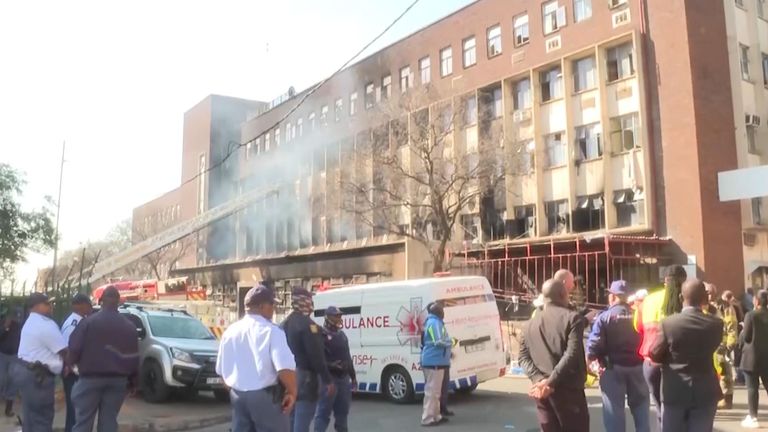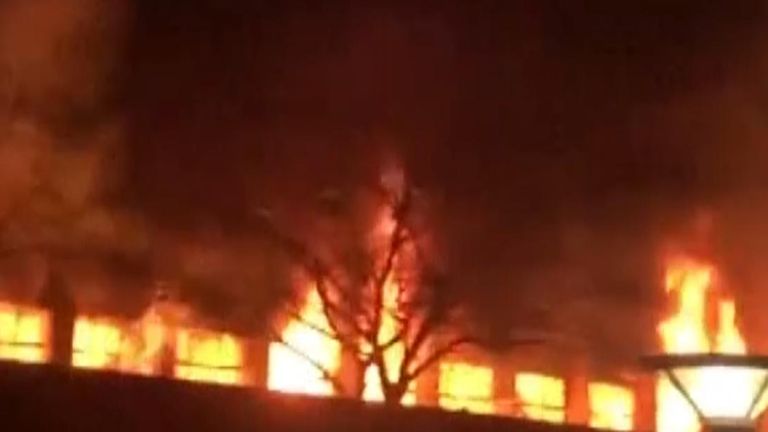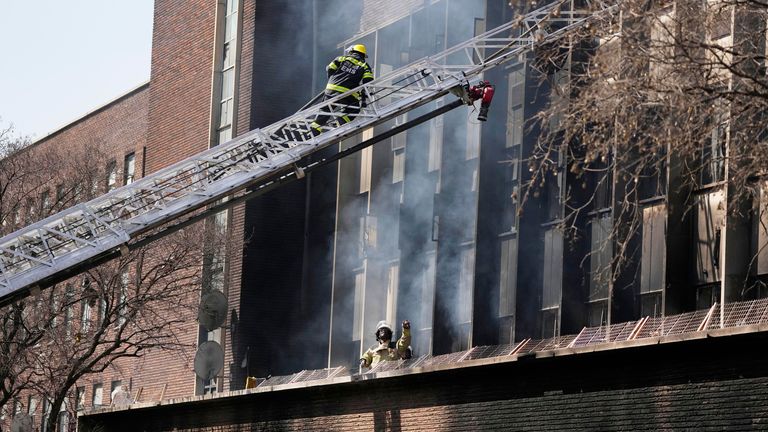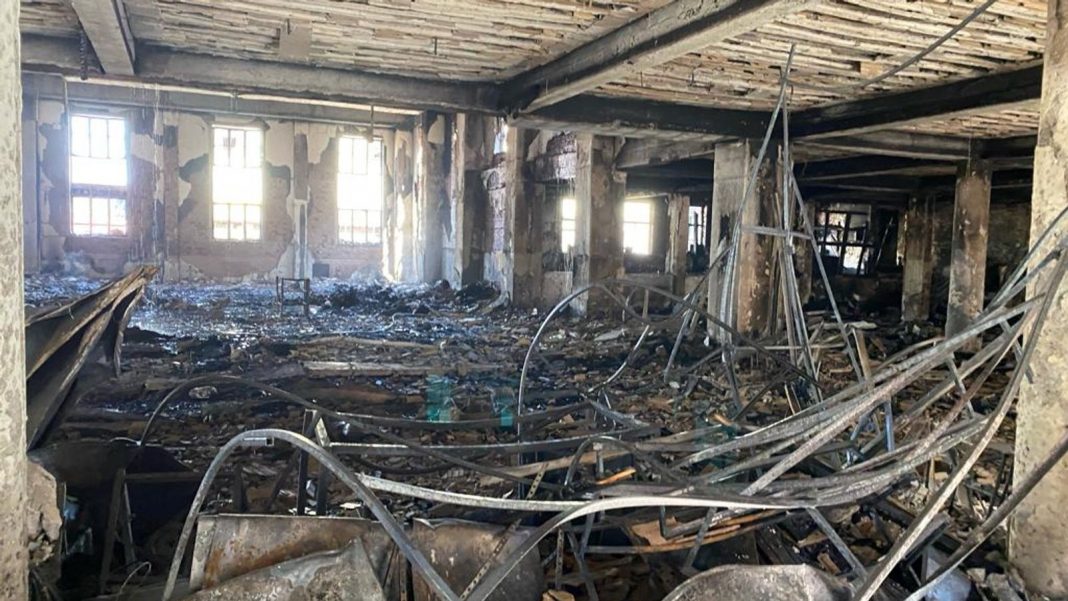A pile of plastic-wrapped bodies are laid out on the tarmac, surrounded by the crumbling buildings of Johannesburg’s inner city.
Their shattered windows and rotting walls have been a warning for a tragedy that has now come.
People gathered behind the police cordons today, straining to see beyond the large fire trucks blocking the sight of the bodies.
Some of them are residents of the burnt building and others are neighbours from surrounding streets. All of them look helpless and unsettled – struck by their closeness to the disaster.
Veteran firefighters and long-time emergency responders have told Sky News this building fire is the most fatal in South Africa’s recent history.
Thabo Mlangeni was sleeping when the fire started at around 1am local time.
“I heard all of the people and children screaming. When I woke up, I saw people running around and the fire was not easy to stop so I wanted to take cover and woke up my friend and we started running.”
Mr Mlangeni lost him as they tried to escape from the top floor of the building. We found him looking in the direction of the bodies with his friend’s belongings in his hand – fearing the worst.
Please use Chrome browser for a more accessible video player
0:28
‘I heard children screaming’

The conditions in the building were dire. An overcrowded squatter settlement with no running electricity, water or proper ventilation. Yet, Mr Mlangeni is still grieving his former residence as he is left with nowhere to go.
“I don’t have shelter and I’m still concerned about my missing friends,” he says, dropping his head.
“I think our government is not living up to his promises. You will find each room with ten people staying there. I blame it on our government.”
The neighbourhood is now being flooded by representatives of the government. Politicians have been visiting the scene throughout the day and President Cyril Rampahosa cancelled a scheduled national address regarding the BRICS summit to visit the site and called the fire “a wake up call”.
But is the flood of attention too little too late?
Read more world news:
North Korea stages nuclear strike simulation
Stunning pictures capture supermoon around the world

“The CBD (central business district) has been neglected for the longest time but we also have to take into consideration that this is a historical challenge that exists,” Johannesburg Mayor Kabelo Gwamanda told Sky News during his site visit.
He stood in front of he burnt heritage building, its blue plaque of honour untouched by the flames. Once an administrative centre that issued passes for the black population to move through the Apartheid era – and still now, a symbol of disenfranchisement.
“What we need to note and take comfort in is that the government of the day is passionate about redeveloping the city of Johannesburg,” he added.

Please use Chrome browser for a more accessible video player

1:08
Firefighters tackle deadly blaze in Johannesburg
This comes as little comfort to the residents and relatives who were pushing past the cordons to identify their loved ones.
A task that is far more difficult than usual. Ten victims are so badly burnt they are beyond recognition and others, undocumented migrants that cannot be easily identified.
Ian Scher, veteran firefighter and co-founder of Rescue South Africa believes that this is the most fatal fire in the living memory of Johannesburg – and has been long coming.
“I and many others feel that this has been coming for the last 20 or so years as it speaks to the lack of adherence to fire and building bylaws as well as overcrowding,” says Ian.
A two decade warning that has not been heeded and is now a burn mark on the history of South Africa’s largest city.







